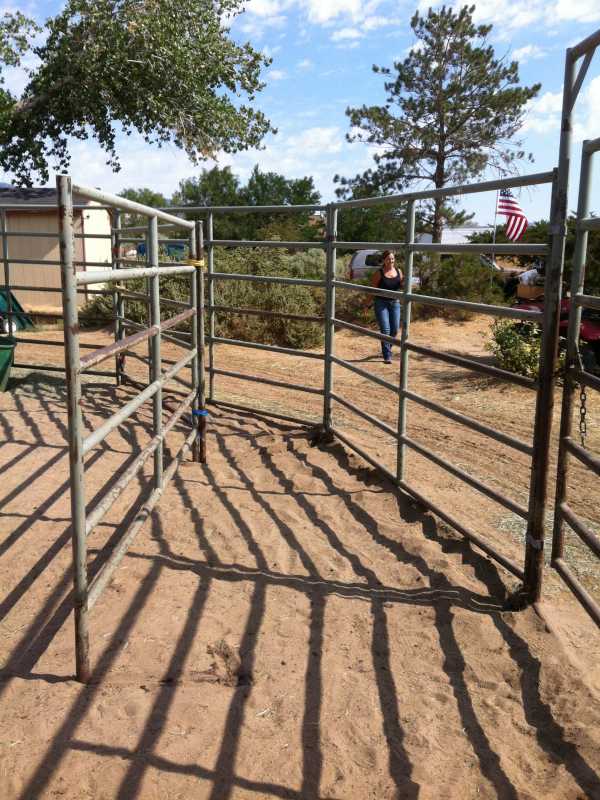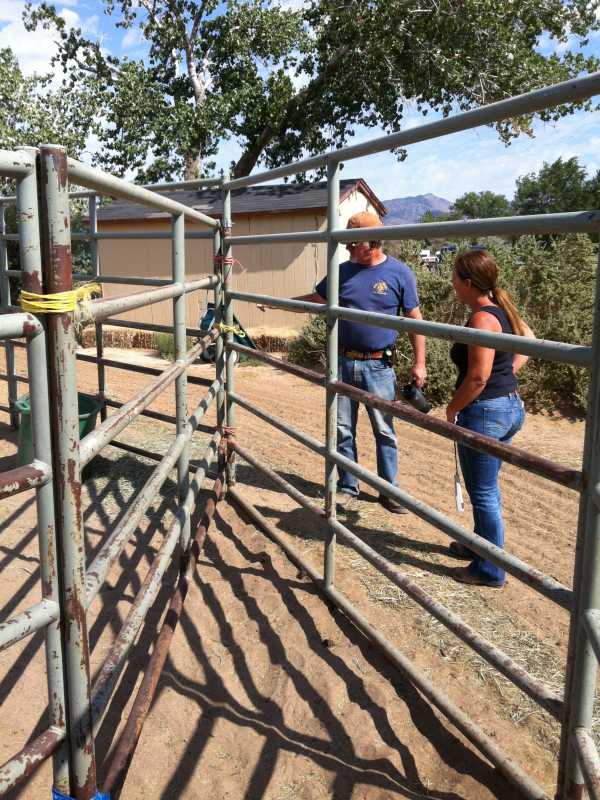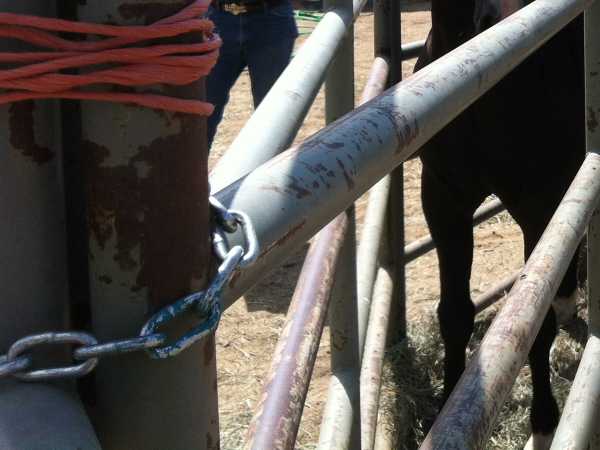|
This information sheet is primarily intended for persons associated with or working with the LRTC Emergency Response Team, however the information may be useful to other groups or private individuals who may wish to use similar equipment when necessary.
We oftentimes have to provide veterinary care, draw blood and perform other tasks on wild (feral) and ungentled horses. While a proper hydraulic tilt table is preferred, we often have to accomplish these tasks using conventional equipment.
In this information sheet we are drawing blood from an older, former free-roaming stallion (now gelded) that can behave aggressively. The procedure can be done safely if certain protocols are observed.
Safety
One person is designated as the Safety Officer, whose primary role is to observe the total operation and stop any unsafe practices.
A second individual is in charge of coordinating the loading of the horse and securing him into the squeeze.
Once secured the veterinarian is in charge of all activities until the horse is released.
Equipment
From our experience conventional pipe corrals are not sufficient for squeezing a wild horse. The panels need to be Bureau of Land Management (BLM) spec or stronger and 6-feet tall. By BLM spec we mean the specifications that they use for facility panels. Furthermore 7-foot tall panels are preferred.
Typically a safe squeeze is formed by bringing two additional panels into a suitable round corral although one can be used in a square pen. Horses tend to be less resistant to going into the squeeze if the panels are curved and they don't see the closed far end.
The curve of the round pen gives the illusion that the panels constitute an alley.

The squeeze comes to a point at the end.

We can lash the panels together with bailing twine to prevent any gaps between the panels that the horse could get a leg stuck in if he rears, but we reinforce the bailing twine with chains.
Safety chains with snap links at the lash points.

Before bringing the horse into the squeeze, everyone dons appropriate protective equipment (primarily helmets) and the procedures to be followed are discussed so that everyone knows what to expect and the safety rules.
The training information presented in these information sheets and guides is offered for illustrative and volunteer refresher purposes only. It is not a substitute for actual hands-on training.
|
Press Back to return to the page which brought you here
Return to LRTC Wild Horse Mentors
Return to KBR Training Page
Go To  KBR Horse Net KBR Horse Net
| 




